My father visited me in Bucharest for a week—what a lovely surprise when he threw his concerns over board and decided to come to see me. It was even lovelier to watch him completely revise his opinion about Romania, which used to be steeped in prejudice about the Romanian people. He told me that he expected them to be “criminals and thieves”—sadly a not uncommon way to portray them in Western Europe—but after only a couple of days, he realized how wonderful and inviting most Romanians really are, decent people at heart, and how safe Bucharest is, even as a large city. He enjoyed his stay, and I am glad he had a chance to experience Bucharest and Romania first hand.
We booked a tour at Palatul Parlamentului, the Parliament Palace, renamed from its original name Casa Poporului, the House of the People (its communist name, of course). The gigantic administrative building was initiated by Ceaușescu after his visit in North Korea, where he enjoyed the grandiosity of his reception. With a vision of being cheered on and seen as Romania’s great leader, he decided to build this project. The Palace of Parliament is in the Guinness Book of Records for being the heaviest building in the world and the second largest administrative building after the Pentagon. It is unknown how much exactly was spent on the project because Ceaușescu had no budget for it (i.e. spent indiscretionarily), but it is estimated at 4 billion Euros.
The project was overseen by a young architect in her 20’s because she won the design competition solely based on the fact that her plans envisioned the biggest, most grandiose building. She was supported by 700 architects (ten of whom helped her with the oversight since she was completely inexperienced), and the project was built around the clock in three shifts per day, seven days a week, with no breaks. The 1977 earthquake had destroyed many buildings in Bucharest and made room for Ceaușescu’s vision, although about 60,000 additional people were relocated as their houses still needed to be demolished as part of the plans. Most of them had to give up big apartments or houses with land to move into small apartments, so it was not a fair trade for them. When the revolution “dethroned” and executed Ceaușescu, the project was only 70% complete, thus he never had a chance to experience his dream.
The building has a thousand rooms, of which only a percentage are in use today. No-one knows exactly how many underground levels there are, except for the highest government officials. Because it’s built into a hill, it is obvious that there are a minimum of two underground levels—we entered the building on the second underground level from the side of the building and had to walk up endless steps just to get to the ground floor.

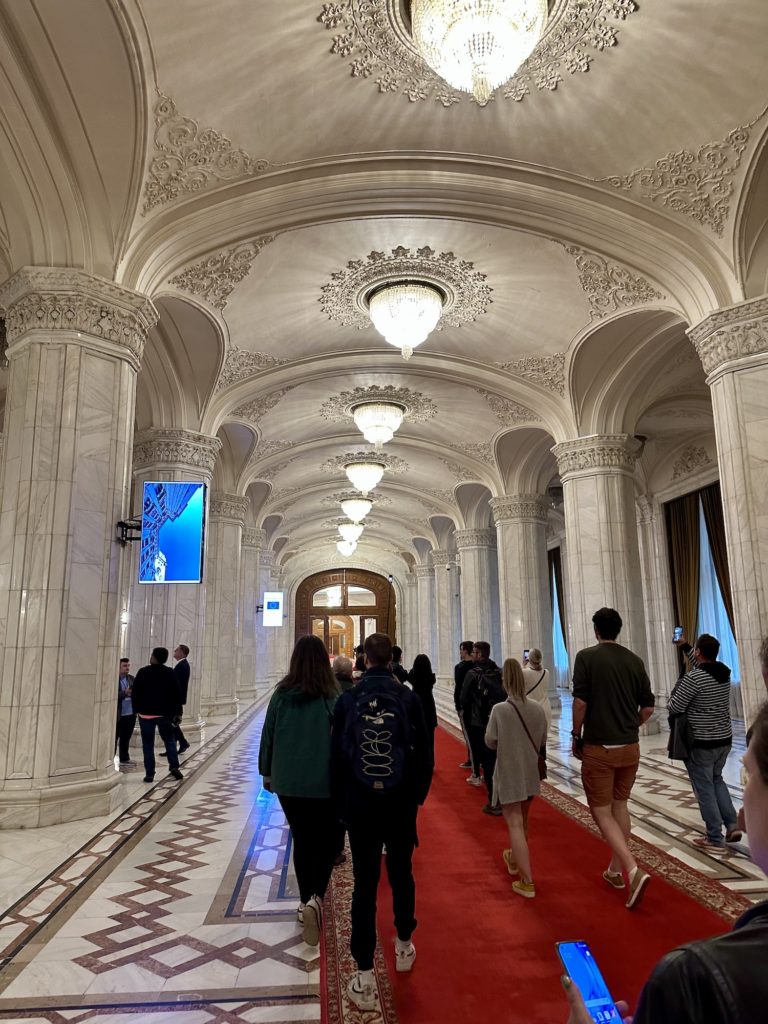
After we go through an airport-style security check at the beginning of our tour, our guide leads us up marble stairs and onto the stage of what was meant to be the parliament’s own opera hall. The chandelier above the audience weighs five tonnes and has to be cleaned and maintained from above. All materials and products in the palace, including the crystal glass in the chandeliers, were manufactured in Romania. The acoustics in the hall are very good, and while it was never used for its intended use (opera), sometimes classical concerts are staged here.
Our guide leads us through ginormous hallways into grandiose rooms; everything is decked out with Romanian marble, silk wallpapers, silk and velvet curtains, crystal glass, Transylvanian rugs and tapestries… It makes for a strange effect: the sheer size of everything is impressive, the finishes are exquisite, yet it’s severely lacking taste and finesse.
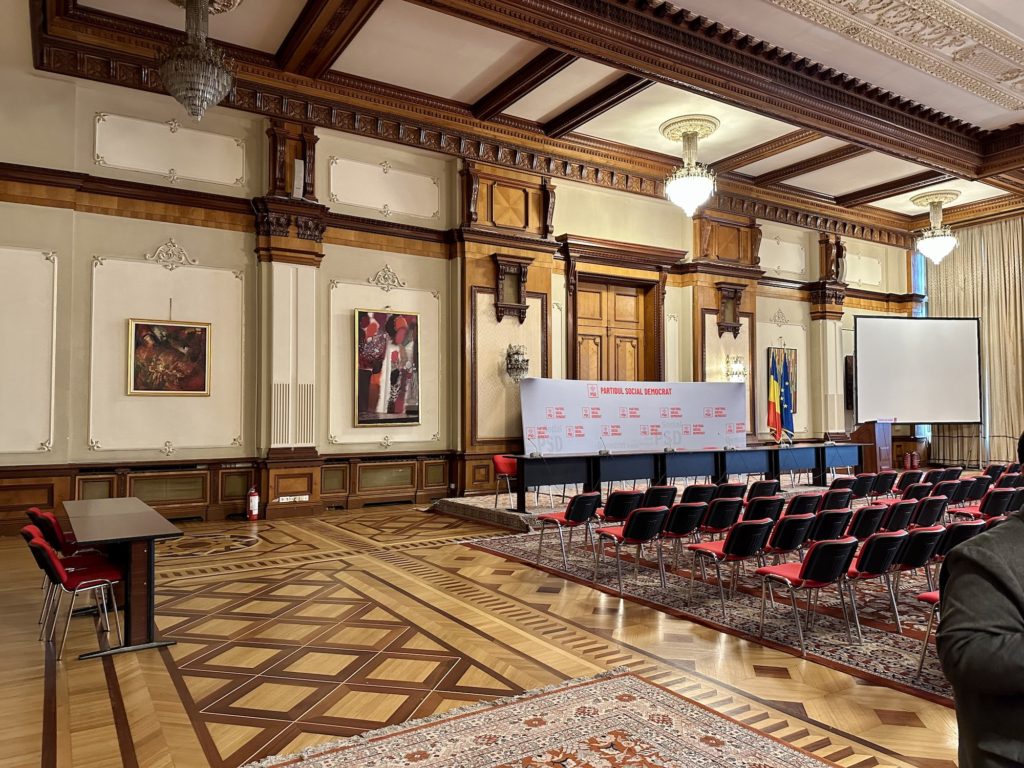
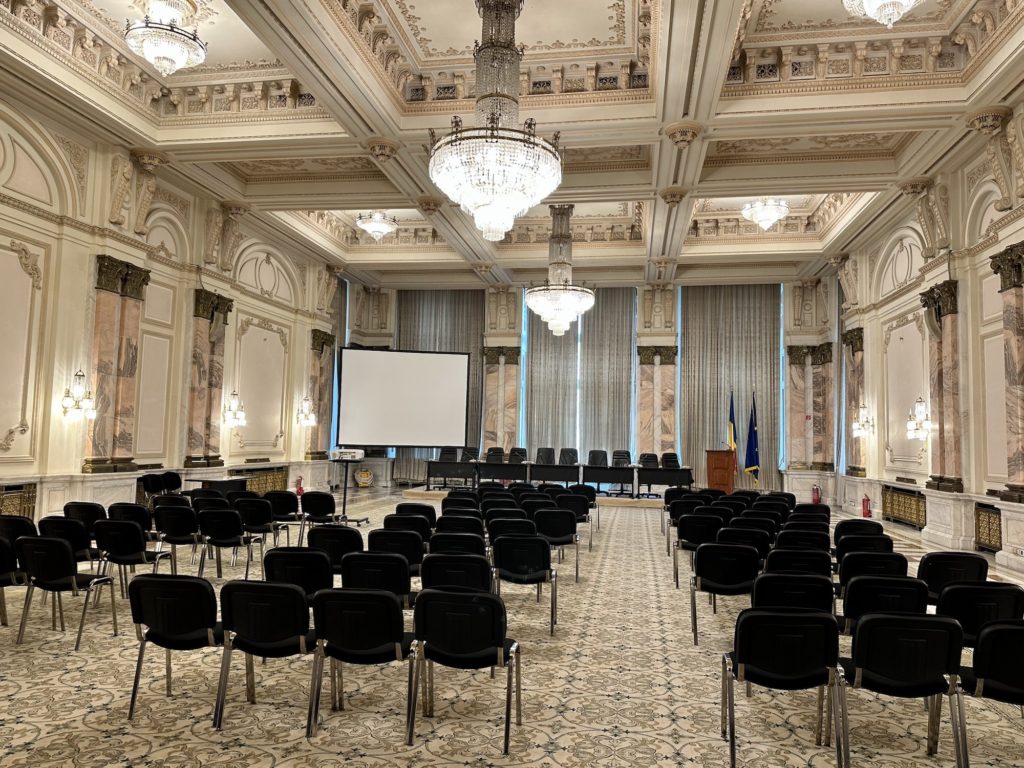
The marble floors have inset pictograms that illustrate the footprint of the palace. That’s kind of cool. A few of the rooms can be rented for corporate conferences, many are used for meetings of political parties or other parliamentary functions.
We arrive at a feature staircase with sixteen meter long velvet curtains at the landings. These curtains will never be taken off due to their weight, and they are cleaned in place from a scaffold when necessary. The rumored story about the staircase goes that Ceaușescu had it torn apart and rebuilt four times before he was satisfied with its ratio of treads and risers, which were adapted for his personal step and convenience.
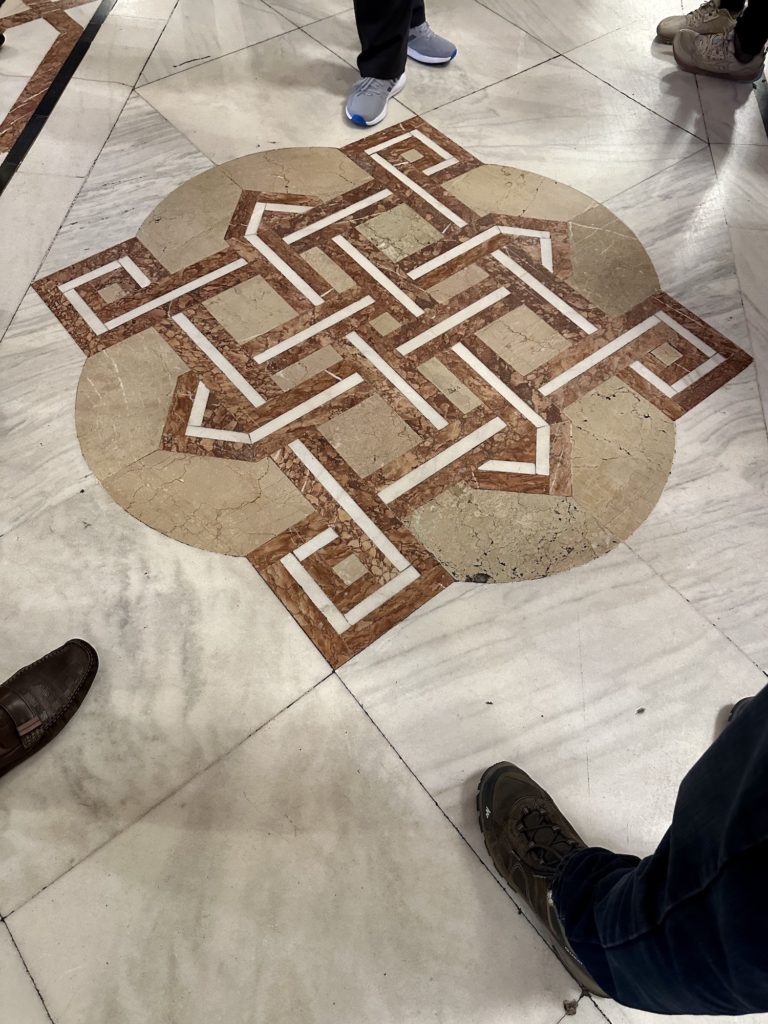
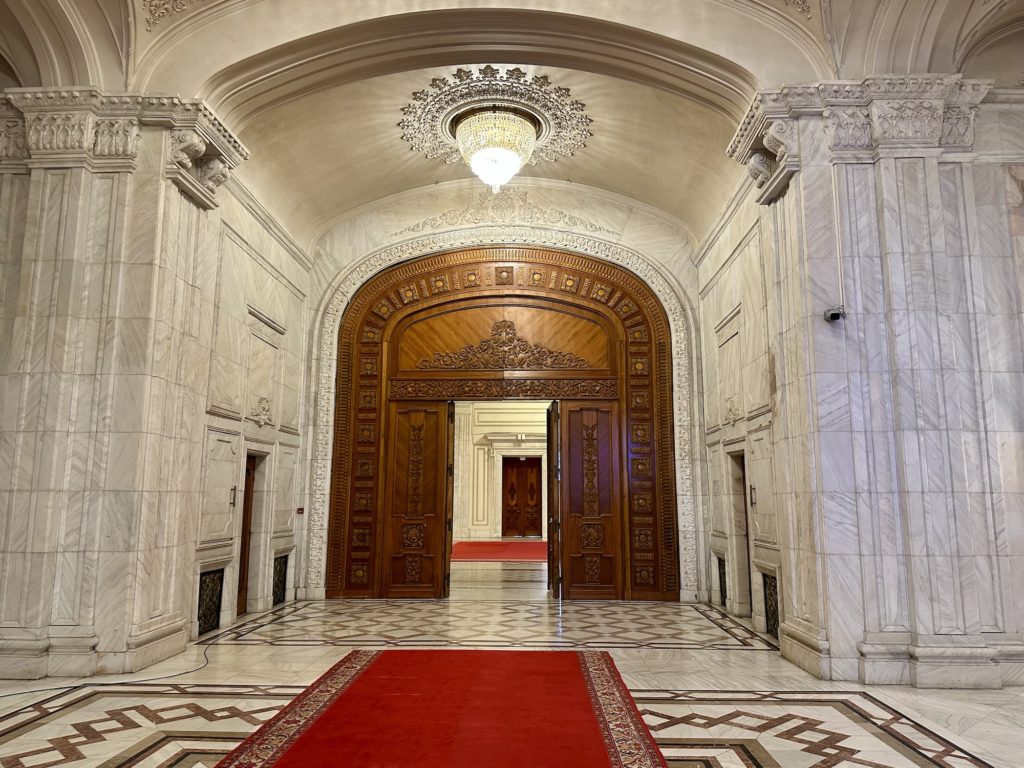
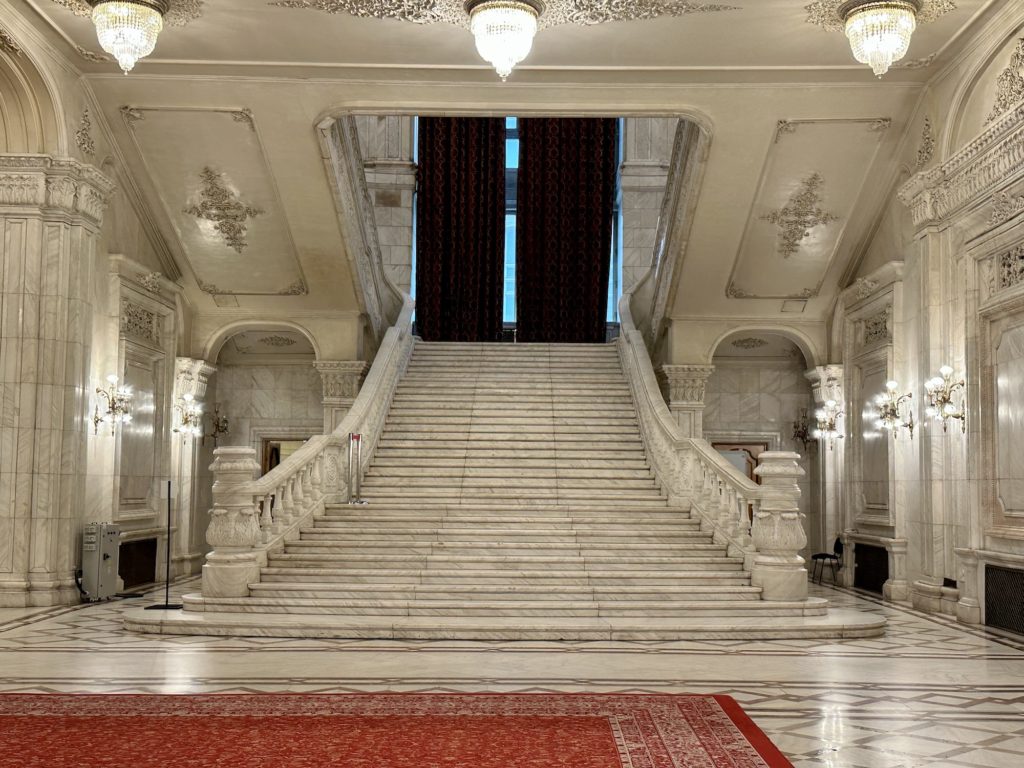
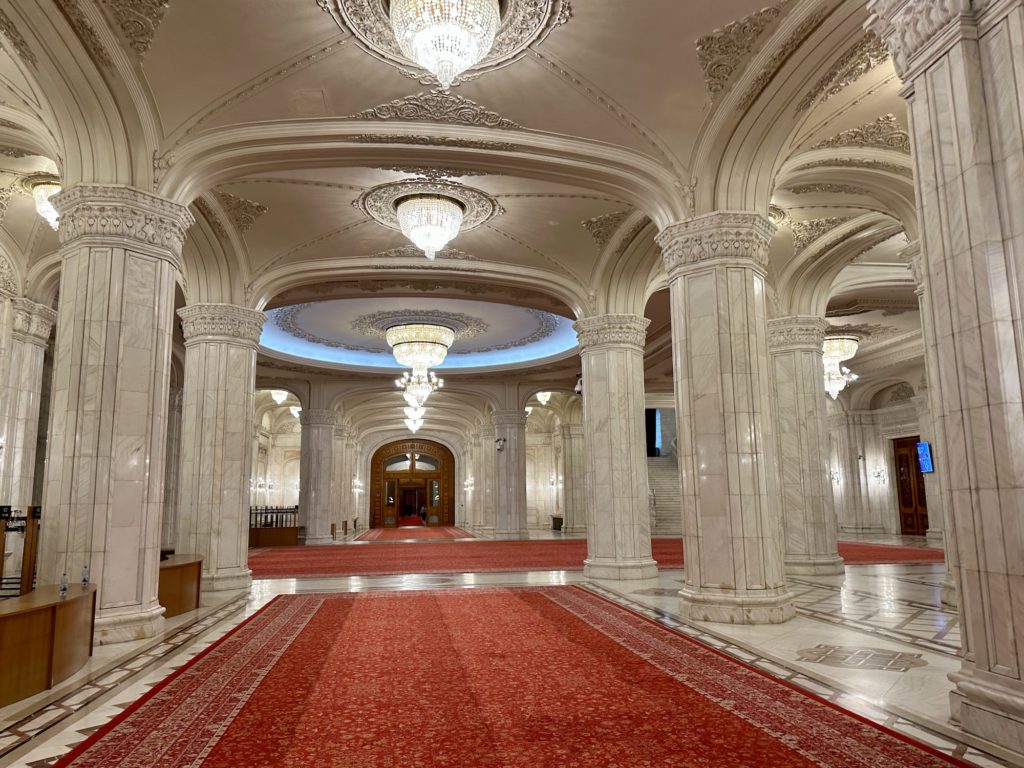
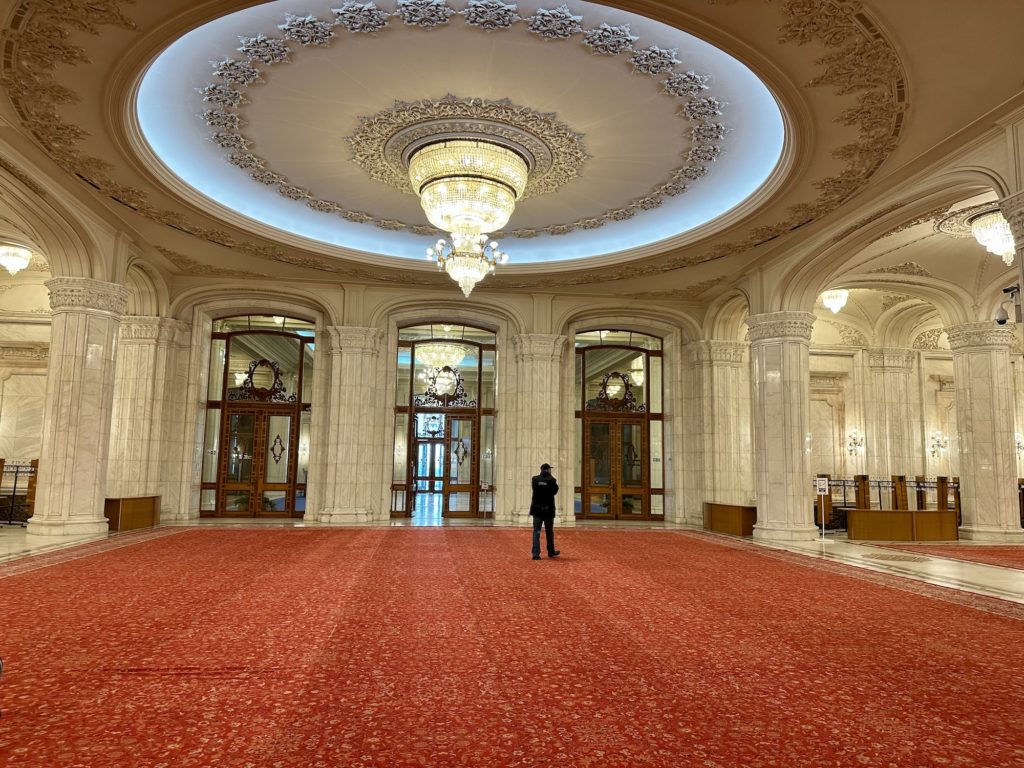

One entire hallway and some adjacent rooms were used to film a religious movie (I do not remember the name of it—if you know, let me know in the comments), which explains why there are religious paintings on the hallway’s wall when Ceaușescu was decidedly non-religious. This part of the palace had not been finished at the time, so the film crews made it their own, and it was left that way. There was also a famous race with luxury cars through the underground parking levels filmed (again, I do not remember the movie’s name, sorry).
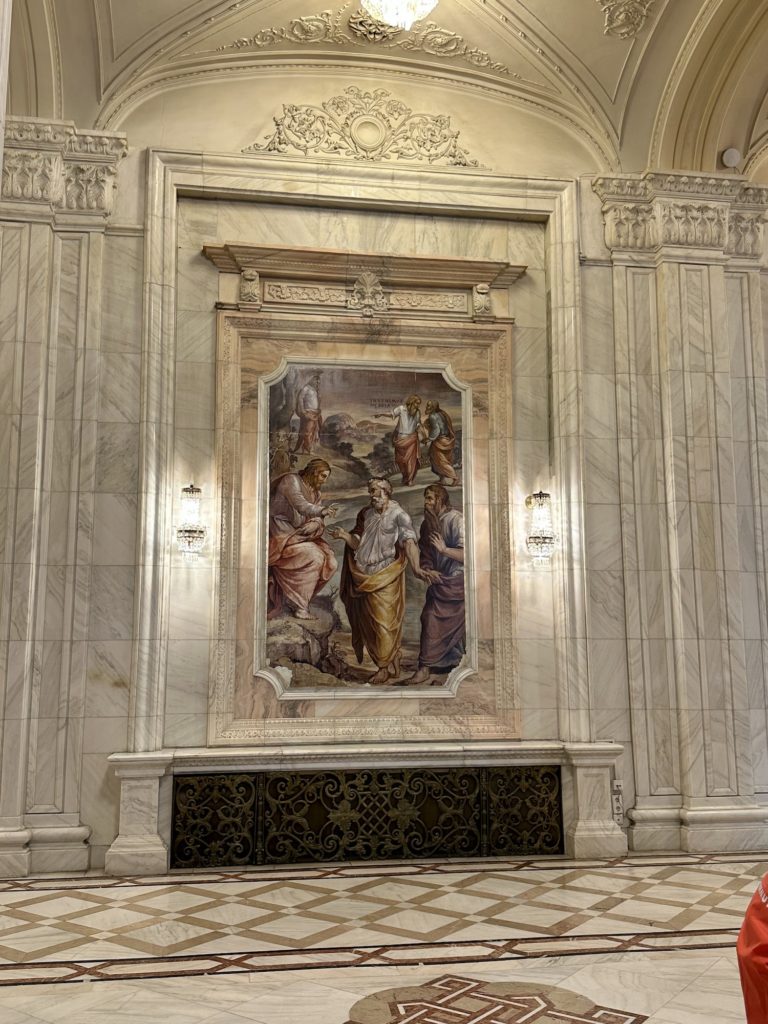
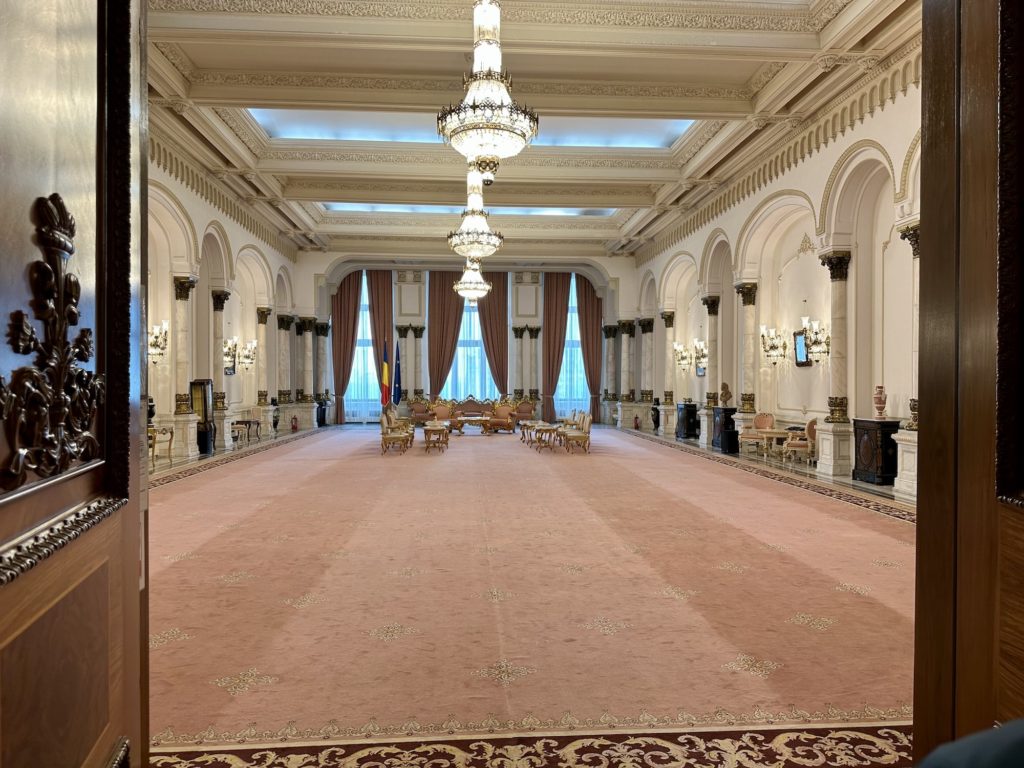
The pink room is completely decorated in pink because this colour is not part of any flag in the world, which it makes it perfect for a neutral space for official state visits. The room with the round table contains the second largest chandelier in the palace, though this one is “only” two tonnes heavy. Ceaușescu’s plan saw a completely golden chair (or shall we say throne?) for himself at this table, but since he was taken off the map before its completion, it was never actually made.
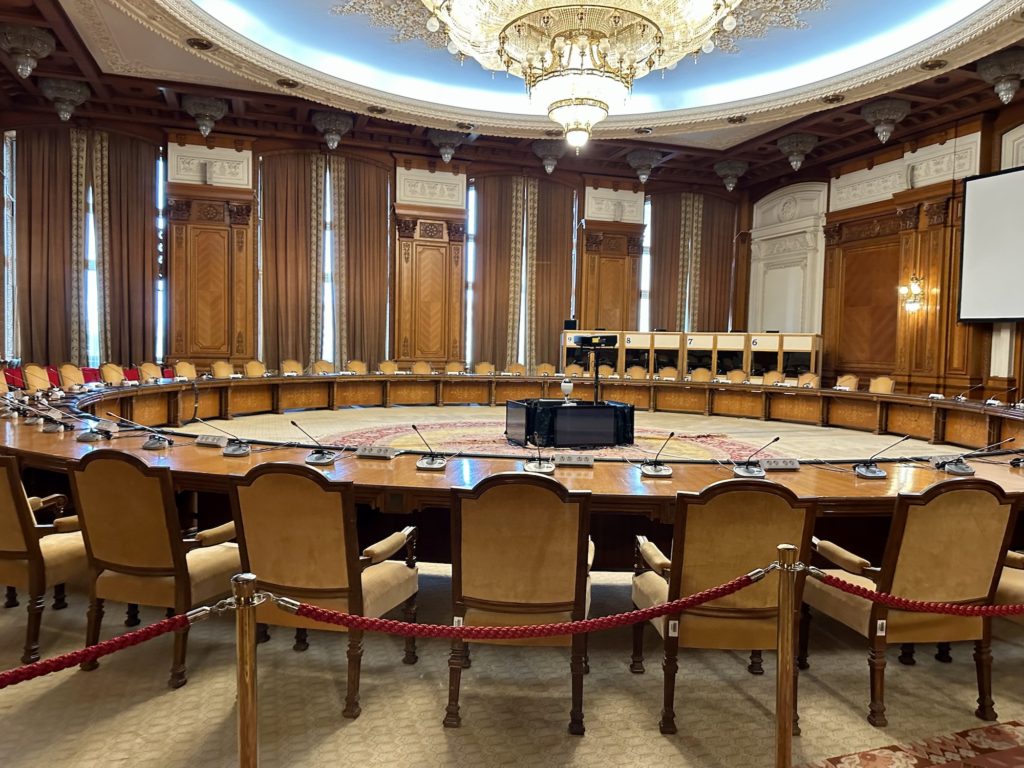
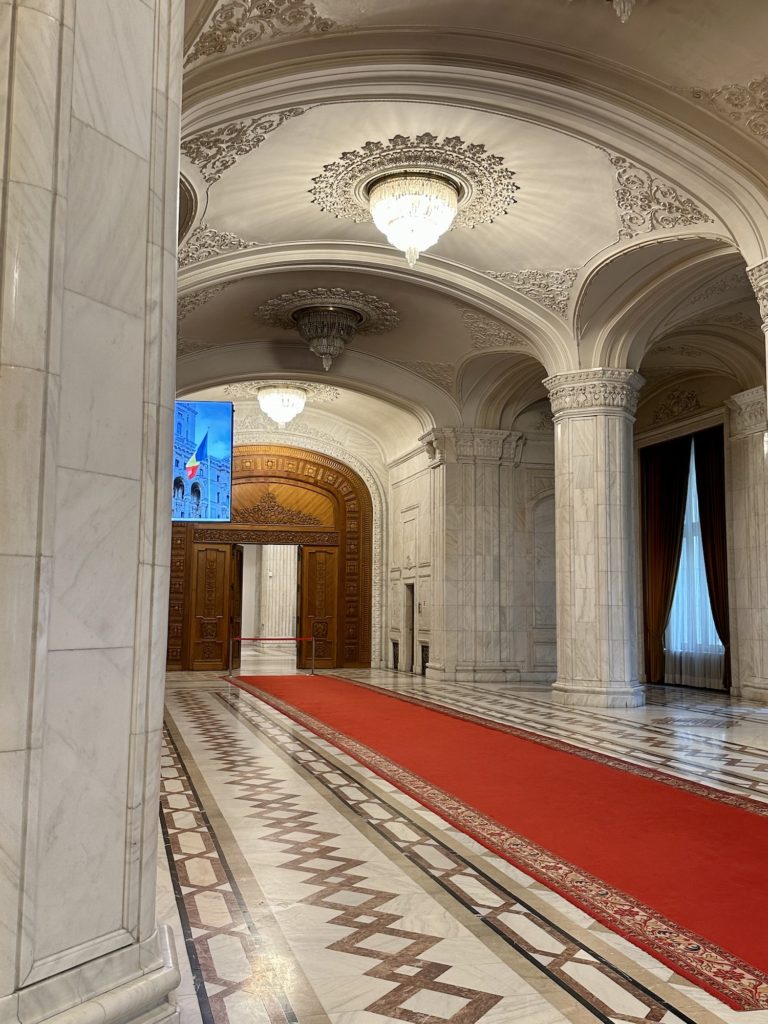
The tallest room in the palace is nineteen meters high and leads to the large balcony at the front of the building, where Ceaușescu imagined himself giving speeches to his people down on the plaza. From the balcony, you can see the boulevard to Union Square (Piața Unirii), built a little bigger than the Champs-Élysée in Paris. Of course, he never had a chance to inaugurate this balcony; Michael Jackson, however, did have this honour, and he famously said to the masses below, “I’m so happy to be in Budapest!” Since he was beloved by his fans, they forgave him graciously.

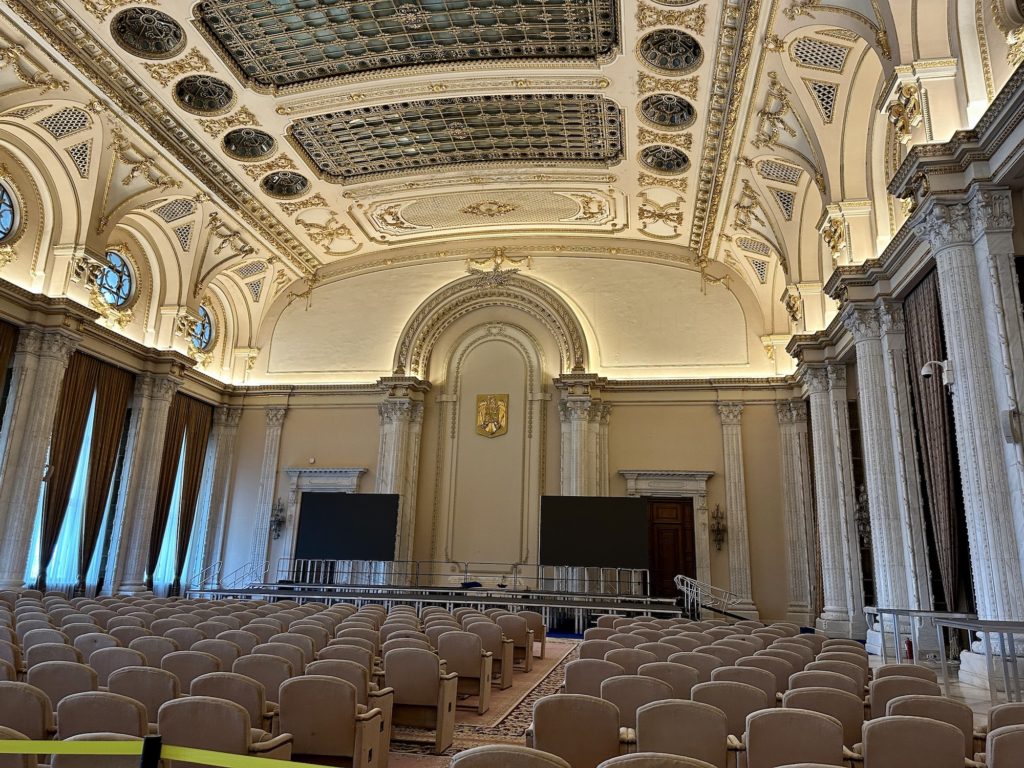
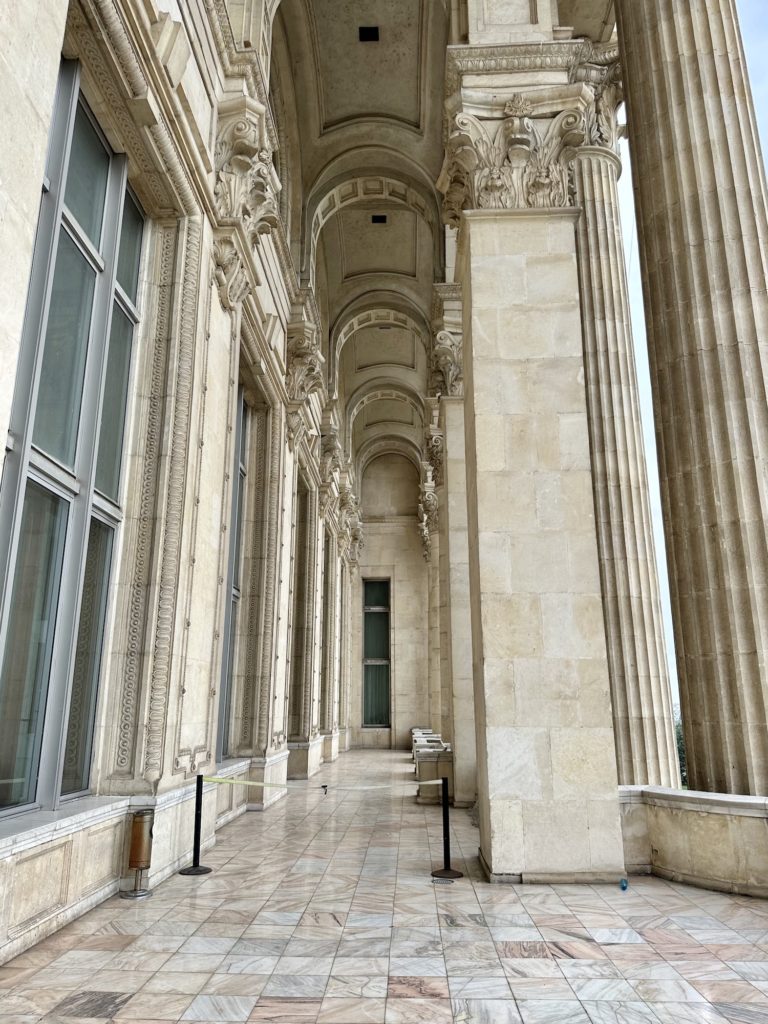
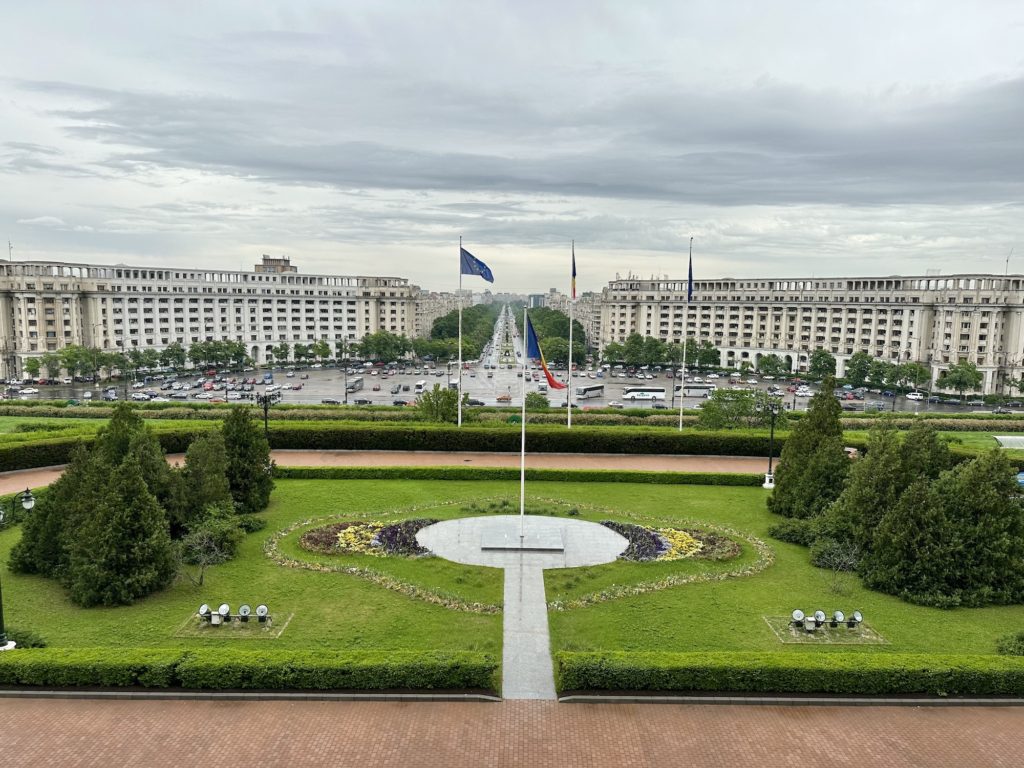
It was a good tour; the guide was entertaining and informative, and I’m glad I went to see it. Experiencing the Parliament Palace leaves me simultaneously in awe and with a distaste that I need to physically shake off.
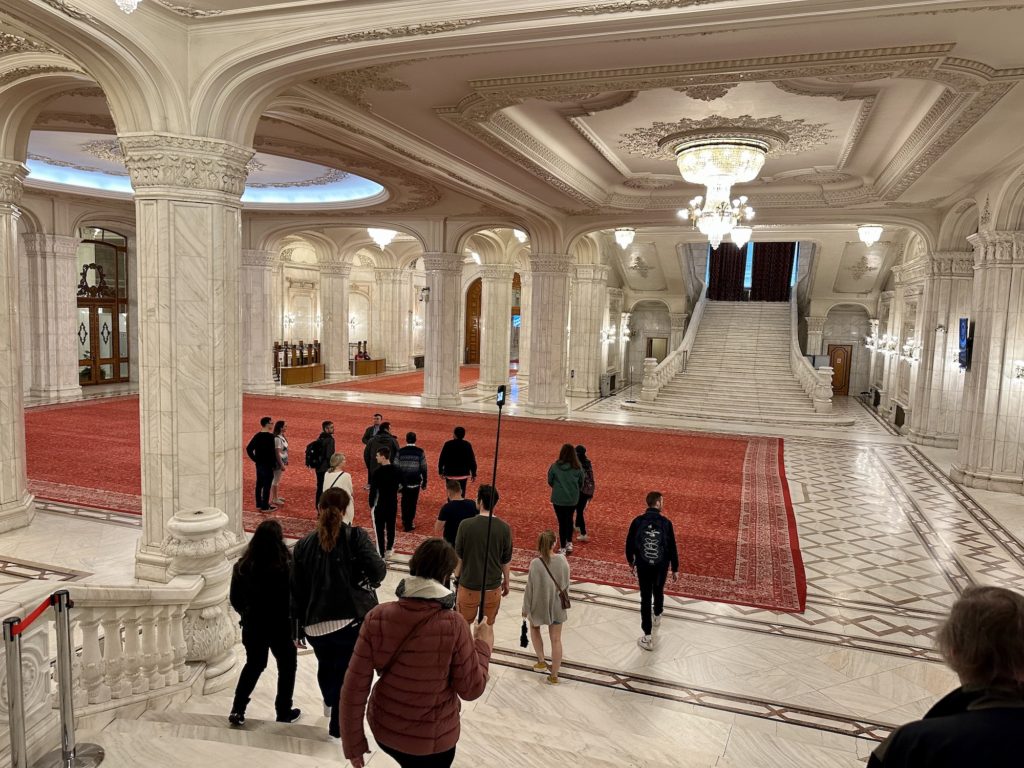

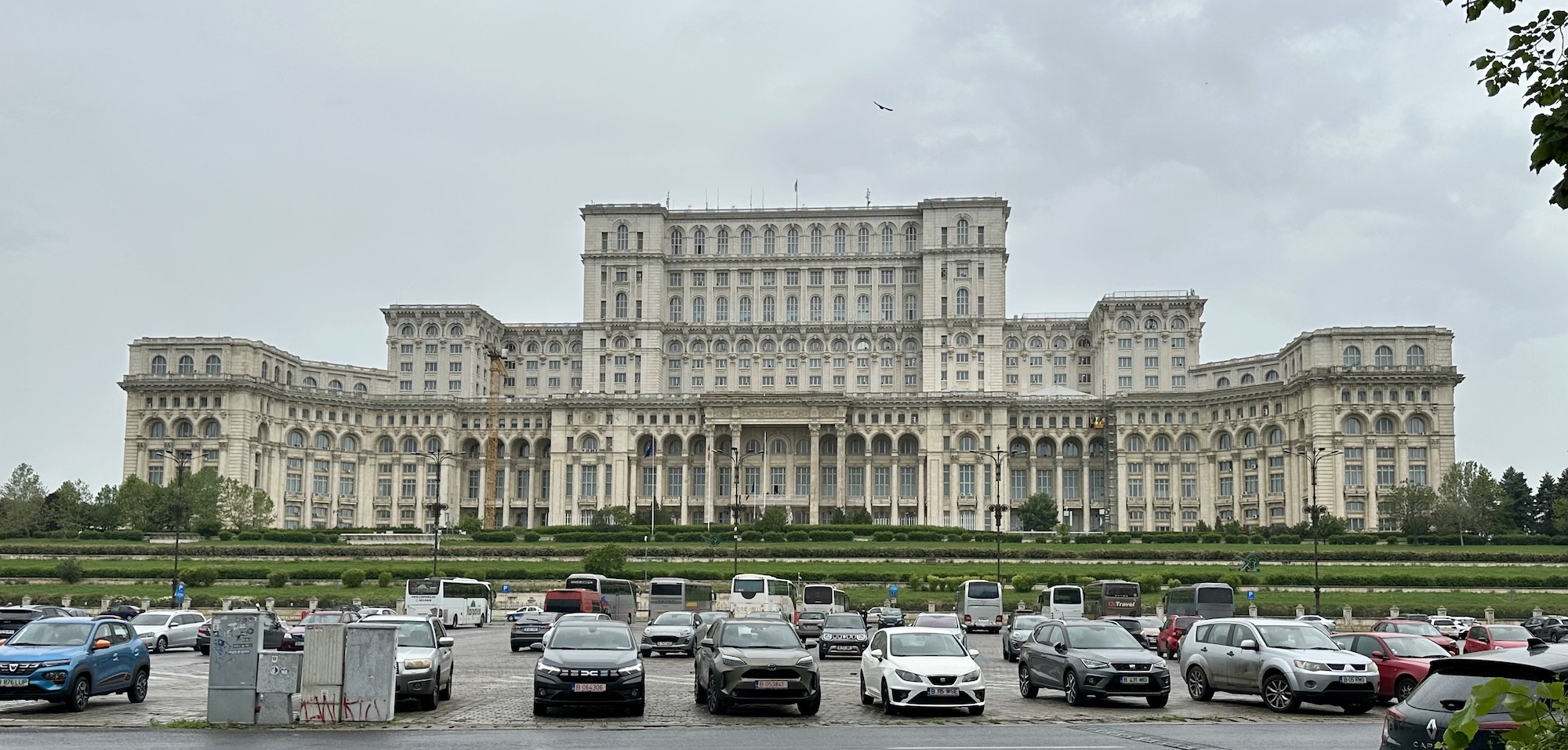
Wow! Quite opulent!
C
Wow. Grandiose building for sure… sad about the relocation of so many people, hard to phantom that! It’s like it’s own city encampment. Glad the visit was so productive and enjoyable!